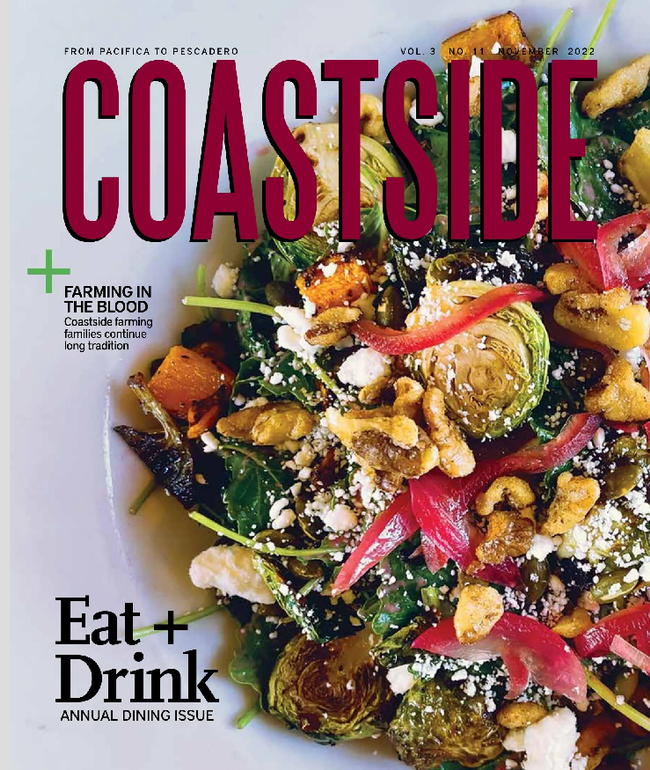Our northern California coastal climate allows us to grow vegetables all year round. In contrast to many parts of the country, where gardens and gardeners are in hibernation, fall is also one of the best times to start winter planting and get a head start on spring planting. Many local nurseries offer seedlings and, as many people discovered during the pandemic, germinating your own plants from seeds is rewarding, inexpensive and fun. What's more, there is a dizzying variety of seeds to choose from. Now, many modern day seed aficionados are using a technique known as “soil blocking,” a simple and effective method of starting seeds that was used by the Aztecs more than 2000 years ago.
Although the Aztecs used cubes of nutrient-rich mud to grow their seedlings, modern day soil blocks are composed of potting soil and other ingredients that are compressed into cubes of various sizes. The cube functions as both the container and the soil for starting and growing seedlings, eliminating the need for plastic cell packs or peat pots. Seedlings develop a stronger root system because more oxygen is available to the roots when the growing medium is not surrounded by a barrier, as it would be in a pot. Once the roots reach the edge of the block, they are “air-pruned,” a natural process that temporarily slows down root growth. This not only prevents a plant from becoming root bound but, once it is transplanted, allows it to become established more quickly because there is less disruption to the roots and therefore, less potential for transplant shock. A final advantage to soil blocks (and something to which every gardener who has mangled a plant getting it out of a pot can relate) is that when seedlings are ready, all you need to do is dig a hole and plant--far less stressful for all concerned!
Soil Blocking: What you'll need:
Different combinations of ingredients can be used as long as the mixture holds together when mixed with water. Here are two options:
Option 1: 1 part peat moss or coco coir + 1 part pearlite or vermiculite + 1 part compost.
Option 2: 1 ½ *bucket peat moss or coco coir, ¼ C. garden lime, 1 bucket perlite, 1 C. all-purpose organic granular fertilizer, ½ bucket garden soil+ 1 bucket finished compost
*2.5 gallon bucket
--A large container to hold your potting mix
--Warm water (tap is OK)
-- Soil Blocker tool: spring-loaded device that compresses the soil mixture into blocks and forms an indentation on top to plant the seed. The best size tool for most seeds makes 4-2” X 2” X 2” cubes at a time. --Garden seeding tray lined with cardboard or paper
--Labeling tape, spoon, tweezers
The following steps are for a 2-inch soil blocker that produces four soil blocks at once.
How to make soil blocks:
- Combine the pre-made mix or your own mix with water, and store until you are ready to use.
- Line your container with cardboard or paper; you will be watering from the bottom, and this will help absorb the water.
- When you are ready to make your soil blocks, scoop out the soil mix into a container. Add water and mix; the soil should have the consistency of peanut butter. You can also add water and let it sit for a while to increase absorption.
- To make the blocks, pile the soil mix into a mound that is about double the height of the soil blocker. Then plunge the soil block maker into the mixture. Twisting as you plunge helps compress the soil.
Ensure the cubes are compressed and filled tightly.
- Scrape off the bottom of the soil block maker with a straight edge and set the blocker in your seedling tray. Release the soil blocks by pushing down on the handle and lifting the blocker. The blocks should be firm. If the blocks crumble, add more water to the mix. If they slide out easily and fail to hold their shape, add more dry mix.
- Plant your seeds directly in the depressions created by the soil blocker. Label the soil blocks using tape on the outside of the tray. We a soup spoon and tweezers to facilitate this step. Ensure you follow the directions on the seed packet. Some seeds do well if you soak them before planting.
- Water the blocks from the bottom up or mist. Do not water from the top; it will erode the block.
- After seeding, the seeds are covered with a bit of peat moss. This step helps germination. Ensure you follow the directions for seed depth.
- Soil blocks are easy to move around and organize. If a block fails to germinate, you can remove it from the tray. It is easy to know when it's time to transplant the seedling or pot up into larger containers because you will see the roots when they reach the edge of the block.
Seed germination is a great way to experiment and learn more about gardening. As you learn and refine your materials and techniques, you'll find that soil blocking leads to healthy transplants and a thriving garden. For more information, check out the following resources: Seed blocking: The New Organic Grower (1995), Eliot Coleman.
YouTube Seed Blocking: https://www.youtube.com/watch?v=xLbAkqau_MI
Cynthia Nations is a San Mateo/San Francisco UC Master Gardener who recently purchased a soil blocker and is currently germinating broccoli, spinach, and lettuce seedlings. This article was edited by Maggie Mah, a SM/SF UC Master Gardener.
